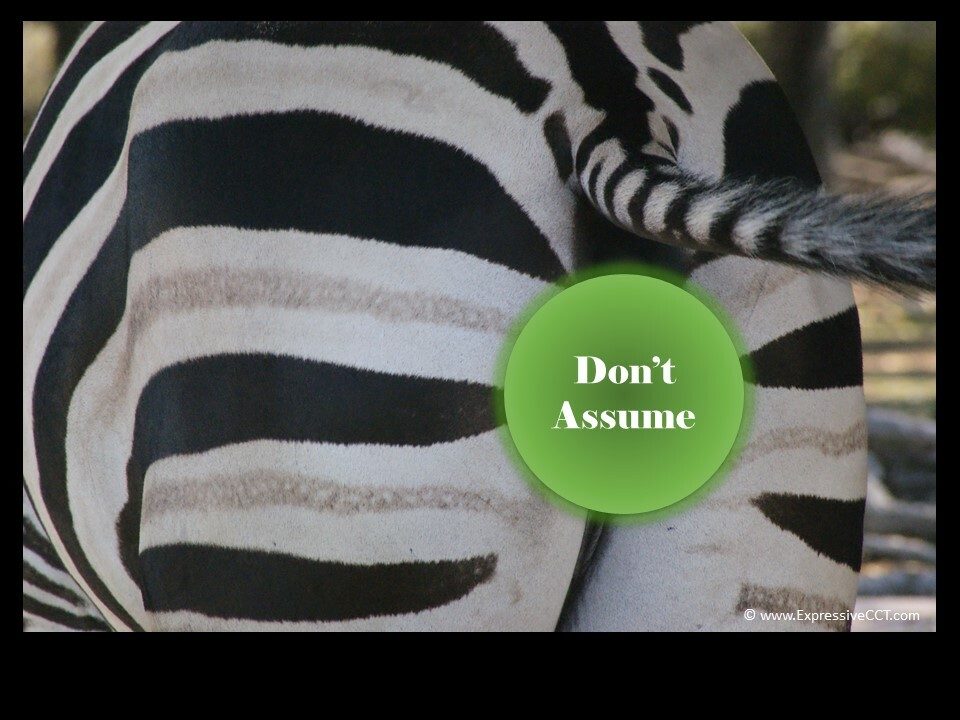Without knowing it, we disempower ourselves by placing limitations on our thinking.
Our thinking reflects what we know AND what we don’t know. Inherently, our thinking is then limited. Imagine it like this. You are on a scenic drive through the mountains and everything you can see is directly in front of you. You see the road, some trees, large and small rocks, and a rare Bighorn sheep that happens to be strolling across the road. BUT you miss what is to the left of you, the right of you, and above you. Although you still enjoy the drive, what you see is limited. If you had been able to see more, you would have seen the bald eagle soaring overhead with its 6 foot wingspan, the calming waterfall tucked into the thick forest, and the family of deer 30 feet from the road.
When we see more, we empower our thinking, and more than likely, we think differently in a good way.
Empowering your thinking starts by using a technique called Empowering Questions. I love teaching this technique to my client’s and their employees because it helps them discover options, solutions, and perspectives they were unable to see before.
Here is how it works.
First, state your viewpoint.
Second, ask and answer these six questions about your viewpoint.

IMPORTANT NOTE: If you reach the end of the six questions and you are exactly where you started, guess what? It means you haven’t yet empowered your thinking. This isn’t to say you need to change your mind after all six questions have been asked and answered; it does mean that you should be able to see the situation differently than before (and maybe change your mind too).
Check out this example.
Viewpoint: I believe good employees take initiative and do not need regular contact with their boss.

If the answers in the example above were yours, you might begin thinking that you need to do you, and let others do them. In other words, stop worrying about how others like to be led and focus on what you need from your boss.
A challenge now to try empowering questions yourself. Choose a viewpoint that you have on any topic. If you can’t think of a topic, practice with one of these:
A good leader is someone who ______________.
My boss needs to _____________.
Our company is _____________ because ____________________.
Our health insurance benefits are ____________________.
People who do/say/believe _______________ annoy me.
It is better to _____________ than to ______________.
It is wrong to ____________________.
It is right to ____________________.
My coworker is always late because ______________________.
I describe myself as _________________________.
Or if you want to practice with a more difficult/controversial topic, try one of these:
I think wearing a mask in public is ___________________.
President Trump is doing a _____________ job.
Black Lives Matter is a/an __________________ organization.
Defunding the police would result in _______________________.
Removing historic statues is ____________________.
I think K-12 students and teachers returning to school is a/an ____________ idea.
Vaping is ____________________.
Gun control in America is _____________________.
White privilege is ______________________.
I think using them/they as a singular pronoun is ____________________.
Okay, after asking and answering all six empowering questions, one of three things happened.
“I don’t see anything differently than I did before.” This is like driving through the mountains and seeing only what is front of you. Go back and do the exercise again because you still have disempowered thinking.
“I see some things differently, yet I haven’t changed my viewpoint.” This is like driving through the mountains and seeing to the right and left, and above you, and concluding the scenery in front of you is what brings you the most joy. You have achieved empowered thinking IF you were able to see and validate other perspectives—even if you didn’t agree.
“I see things differently, and I have a new viewpoint.” This is like driving through the mountains and seeing all there is to see, and then choosing to focus on what is to the right and left of you, and above you (while keeping your eye on the road so you don’t crash). Congratulations! You have empowered thinking that led you to new understanding.
A few more notes before I end.
The reason for asking yourself, “Do I really believe that?” is to identify whether your viewpoint is actually yours or someone else’s.
The reason for asking, “Who else believes that?” is to raise your awareness that you might be surrounding yourself with people who think exactly as you do, can contribute to limited thinking.
And the reason for asking “What is the best/worst thing that could happen if I believe differently?” is to make space for the possibility of believing something else, and then making a choice you can be okay with.
If you want to read more on the importance of asking questions, read these: connect the dots, solve the right problem, seek understanding, and ask the right questions.









Leave A Comment